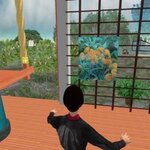Science category landing
Medicine

A hormone produced during pregnancy spontaneously increases myelin, which enhances signaling within the nervous system, and helps repair damage in the brain and spinal cord, according to new animal research.
The findings, published in the February 21 Journal of Neuroscience, indicate that the hormone prolactin promotes an increase in myelin production and may have a use in treating multiple sclerosis (MS).
In MS, affecting about 2.5 million people worldwide, the body's own immune system attacks myelin, which insulates nerve cells and plays a critical role in the speed at which messages are…

There are always some kinds of records that you just can’t believe. These cases are outside the borders of rational thinking. The youngest mother was a 5 year old Peruvian girl. I thought that it’s just an other urban legend, but the images and the sources convinced me. Ok, a five year old girl is not matured enough to give birth to a child. The absence of puberty, menstrual cycle, proper development of the uterus makes it impossible, but:
Her name was Lina Medina, a Peruvian girl from the Andean village of Ticrapo… Lina’s parents initially thought their daughter had a large abdominal tumor…

Recently, I’ve found several blogposts and papers writing about the future of medical journalism, the problem of open access. I’d like to spread the word about a new system in medical journalism where the scientific community decides about the fate of a submitted article. First, some words about the impact factor. Sciencesque had an interesing post about how impact factor is calculated and why we should follow the newly proposed system of PLos One.
In a radical move, PLoS One has proposed to publish any paper that is technically sound, and let the scientific community submit comments about…

After the hard days of the Week of Science, here are some funny and interesting links, sites. You should take a break with these before I start to write serious, gene-maniac posts again. And let's submit your articles, Gene Genie is dute to be published in 5 days!
What color eyes would your children have?
What is this medical word? A list of the most often misunderstood medical words.
DNA Rainbow
This picture shows details of chromosome 1. The green points represent adenine, the red thymine, the white guanine and the blue cytosine.

This is the last day of the Week of Science, a challenge on justscience.net to write at least one scientific, referenced article per day. Generally, it was a good idea, but the categories became unreadable and uncontrolled after the first days. And it’s going to be held only one time a year.
Thank you, Razib at Gene Expression for working so hard on the idea! Here are my articles made for the Week of Science (7 articles for 7 days):
Safe Prenatal Genetic Test?
My dream about the prevention of genetic conditions
New Blog Carnival: Gene Genie
Bye Bye, Sonic Hedgehog
Pompe disease, a rare…

I’d like to present a great web 2.0 based site with plenty of features made for physicians and medical students.
SocialMD utilizes the power of the network to benefit all the members of the network. With SocialMD you can:
Network better with physicians and students/residents
Read multiple blogs by physicians, students and residents in a fast and effective way
Read the latest medical news from various news sources
Find Study Partners for USMLE
Use the SocialMD Search Engine optimized for searching USMLE and residency related information.
Buy and sell books and other study material
Find…

A first-of-its-kind study published in the February issue of the Journal of Neurosurgery: Pediatrics suggests endoscopic brain surgery, pioneered by surgeons at the University of Pittsburgh Medical Center, has the potential to be safer and often more effective than conventional surgery in children with life-threatening conditions.
This minimally invasive approach -- known as the Expanded Endonasal Approach (EEA) -- was pioneered and refined in adults over the last decade by surgeons at UPMC and the University of Pittsburgh School of Medicine and is now a viable option for tumors in children…

Four million people die every year from respiratory diseases such as viral influenza. For elderly people in particular, an infection can be dangerous. What is more, the flu vaccine is not as effective with this risk group as it is with younger people. The reason for this is that with age the fire power of the immune system is reduced. Why this is the case is largely unknown. An international EU project led by the University of Bonn is now starting which aims at shedding light on this. Among other things, the researchers want to get a step closer to solving this riddle by examining tens of…

Based on Timothy Erickson's thoughts, I decided to start a new blog carnival on genes and gene-related diseases. Our plan is to cover the whole genome before 2082 (it means 14-15 genes every two weeks).
Please take a look at the "official" page of the carnival. (Suggestions are most welcome!)
The first issue will be hosted by Scienceroll on the 17th of February. The second will be hosted by Sciencesque two weeks later. Let me know if you would like to host one!
It'd be important to talk about essential genes and gene-related diseases to our readers. Please promote the carnival and…

What are the methods of prenatal diagnosis? There are two groups: invasive and non-invasive techniques:
Non-invasive methods:
examination of the uterus from outside the body (see Leopold's Maneuvers)
ultrasound technique (like the 4D ultrasound)
AFP screening
Detection of fetal blood cells that have made their way into the mother's bloodstream, so we can obtain a sample of the baby's DNA.
Invasive methods:
Chorionic villus sampling (sample of the placental tissue)
Amniocentesis (sample of the amniotic fluid)
Fetoscopy (it allows interventions such as a biopsy or laser occlusion of…